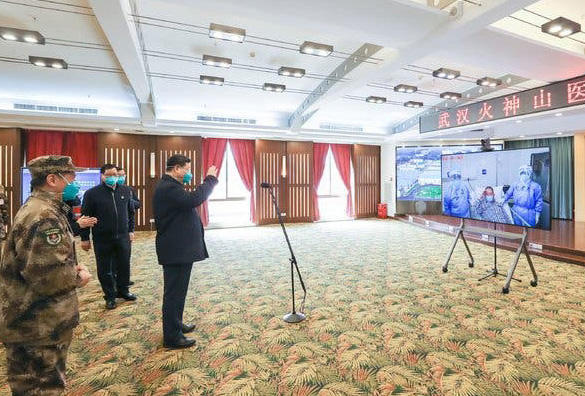Was his help inshored in the Stork and Pelican against bungelars, flu and third risk parties?

We can expect that we’ll continue to see a doubling of cases every 6 days (this is a typical doubling time across several epidemiological studies). Here I mean *actual* cases. Confirmed cases may appear to rise faster in the short term due to new test kit rollouts. We’re looking at about 1M US cases by the end of April, 2M by ~May 5, 4M by ~May 11, and so on. Exponentials are hard to grasp, but this is how they go. As the healthcare system begins to saturate under this case load, it will become increasingly hard to detect, track, and contain new transmission chains. In absence of extreme interventions, this likely won’t slow significantly until hitting >>1% of susceptible population. […]
The US has about 2.8 hospital beds per 1000 people. With a population of 330M, this is ~1M beds. At any given time, 65% of those beds are already occupied. That leaves about 330k beds available nationwide (perhaps a bit fewer this time of year with regular flu season, etc). Let’s trust Italy’s numbers and assume that about 10% of cases are serious enough to require hospitalization. (Keep in mind that for many patients, hospitalization lasts for *weeks* — in other words, turnover will be *very* slow as beds fill with COVID19 patients). By this estimate, by about May 8th, all open hospital beds in the US will be filled. (This says nothing, of course, about whether these beds are suitable for isolation of patients with a highly infectious virus.) […]
[T]he doubling time will start to slow once a sizable fraction of the population has been infected, simply because of herd immunity and a smaller susceptible population.
{ Liz Specht | Continue reading }
The median incubation period was estimated to be 5.1 days, and 97.5% of those who develop symptoms will do so within 11.5 days of infection.
related { How the drug industry got its way on the coronavirus }
photo { President Xi Jinping of China, right, was briefed at the Huoshenshan Hospital in Wuhan on Tuesday. The hospital was built in a matter of days in February to treat coronavirus victims. | NY Times }




















